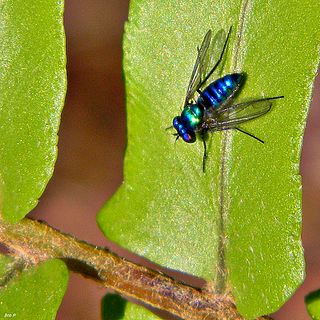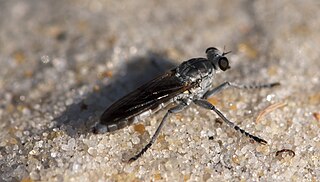| Trisapromyza vittigera | |
|---|---|
| Scientific classification | |
| Kingdom: | Animalia |
| Clade: | Euarthropoda |
| Class: | Insecta |
| Order: | Diptera |
| Family: | Lauxaniidae |
| Genus: | Trisapromyza |
| Species: | T. vittigera |
| Binomial name | |
| Trisapromyza vittigera (Coquillett, 1902) | |
| Synonyms [1] | |
| |
Trisapromyza vittigera is a species of fly in the family Lauxaniidae. [1] [2] [3] [4]

Flies are insects with a pair of functional wings for flight and a pair of vestigial hindwings called halteres for balance. They are classified as an order called Diptera, that name being derived from the Greek δι- di- "two", and πτερόν pteron "wings". The order Diptera is divided into two suborders, with about 110 families divided between them; the families contain an estimated 1,000,000 species, including the familiar housefly, horse-fly, crane fly, and hoverfly; although only about 125,000 species have a species description published. The earliest fly fossils found so far are from the Triassic, about 240 million years ago; phylogenetic analysis suggests that flies originated in the Permian, about 260 million years ago.

The Lauxaniidae are a family of acalyptrate flies. They generally are small flies with large compound eyes that often are brightly coloured in life, sometimes with characteristic horizontal stripes, such as in Cestrotus species. Many species have variegated patterns on their wings, but in contrast they generally do not have variegated bodies, except for genera such as Cestrotus, whose camouflage mimics lichens or the texture of granitic rocks.



